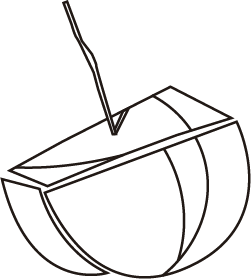HISTORY HERITAGE
In La Vall de Gallinera there is an extensive network of trails and paths, evidence of the amount of people and animal traffic
” Throughout history, the main road, known as the royal road, united the various population centres that were scattered across the valley. In addition, it was also used by the inhabitants to move inland or towards the coast. “
NATURAL HERITAGE
Sunlight passes through the arch of La Foradada
Leandro Calvo (1908)
“The terrain was formed during the Cretaceous period, covered at the bottom of the valley by Tertiary marls that rise on the right bank to a fairly high level due to the relatively modern uplifts of the earth’s crust.”
CULTURAL HERITAGE
La Vall de Gallinera is a territory that has great plant biodiversity
Dry stone construction
It is clear, without a doubt, that the greatest work with dry stone undertaken in La Vall de Gallinera is the myriad of terraces that have shaped the landscape giving rise to an extraordinary mixture of nature and culture.
THE AGRICULTURAL LANDSCAPE
The landscape is what best defines a territory
Cavanilles
” This valley barely has a league from east to west, with a very short distance from north to south, not reaching a quarter of a league. This whole land is made up of hills, ravines and the slopes of the mountains that enclose it. With difficulty you will find another land better planted with trees or better used. From the bottom, until almost the top of the mountains, you can see fields like an amphitheater and, within them, the beautiful confusion that is produced by the multitude of trees of all species, carob trees, pomegranates, holm oaks, mulberries, walnuts, olive trees, cherry trees, pine trees…“
“













